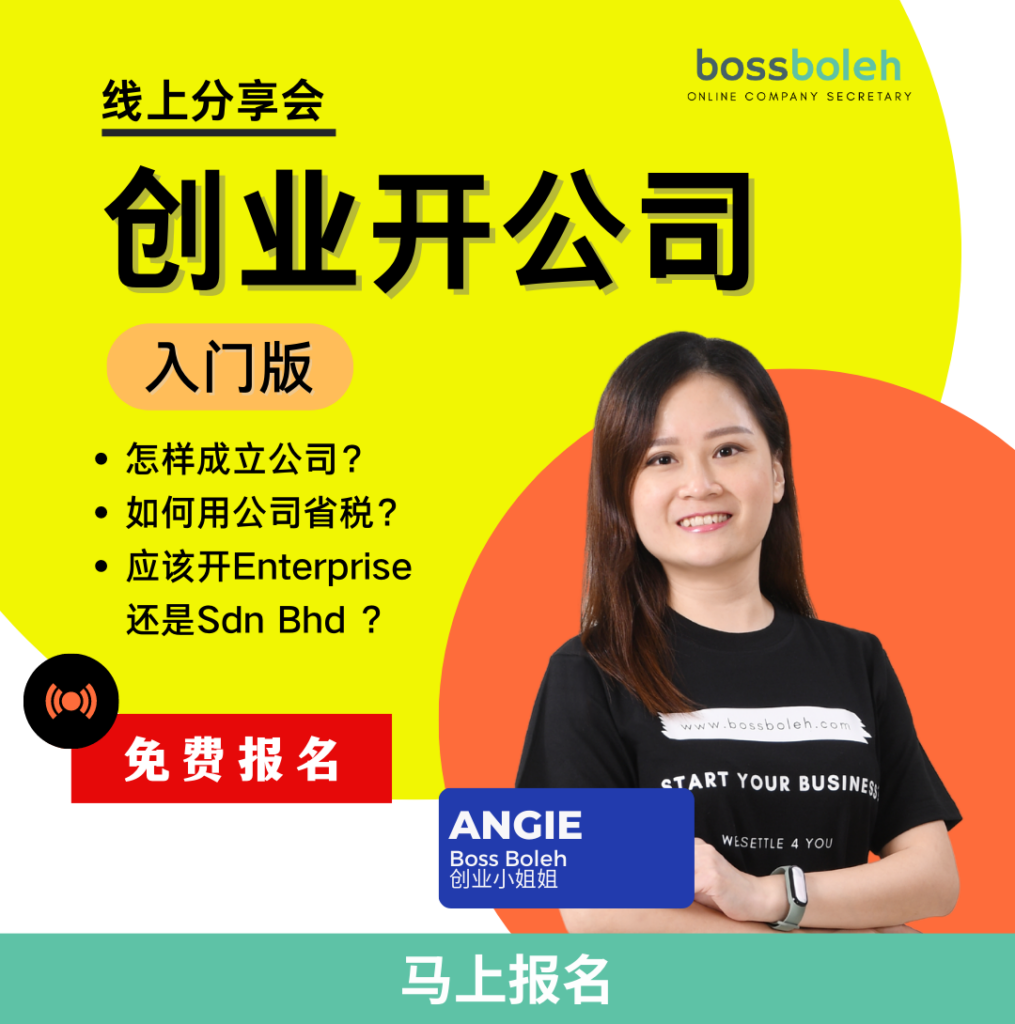Articles
Learn how to start and properly operate a business in Malaysia. These articles are also useful for new business owners.
Customer Testimonials
Hear what our valuable clients have to say about their experience with Bossboleh.
BB e-Learning School
Education should be accessible to all. This platform breaks barriers with curated video lessons at your fingertips.
Is There a One-Size Fits All Strategy For F&B?

Spark Let’s Talk by Maxis Business is a talk show that invites leading Malaysian entrepreneurs to share their perspectives about opportunities and issues encountered by SMEs in Malaysia, especially when businesses are adapting to the new normal. Episode 1 of this series has focused on the Food and Beverages (F&B) sector as it is one of the main industries of the SME sector. Special guests invited to this episode were the well-known F&B leaders who have been in the industry for more than 10 years – Bryan Loo from Tealive, and RenYi Chin from myBurgerLab
This article will conclude some of the interesting points throughout the episode. This will be suitable, and must read for those who are planning to join and already in the F&B industry. Let’s see what ideas & strategies the F&B greats have to share about the industry in Malaysia during this period.
1. Both Implement Different Strategies for Expanding Their Business
For a period of 12 years, Tealive is now a 760-store strong company in Malaysia, excluding the other outlets located overseas. Bryan Loo took the mass market strategy for Tealive because bubble tea is claimed to be the most competitive industry in the world, at least in Asia. In Malaysia, they have to compete with not only other bubble tea brands, but also mamak stalls. Bryan also noticed that Malaysians already have a tea drinking experience and culture (e.g., Mamak stalls), but only lack the representation of a brand name. Therefore, Tealive emerged and their network of stores expanded as hard and fast as they could, to nurture a “modern tea drinking” experience and culture, and outgrow their competitors.
On the other hand, myBurgerLab took their time to grow gradually by establishing only 6 stores in 10 years. Despite not having sufficient capital support for mass market strategy, RenYi Chin said that he also takes top burger industry players like In-N-Out and Shake Shack as role models. These industry greats took their initial 5 to 15 years, focusing on building a strong foundation for burgers, culture and values, before the expansion of their business. Chin did not want to make the same mistake as other businesses in Malaysia that only focused on quantity, which led to failure in sustaining in the long run. By putting their emphasis on product, culture and value, myBurgerlab received positive responses from their target demographics.
There is no right or wrong strategy. As we can see Tealive is trying to build a tea culture, but burger culture already existed in Malaysia for MyBurgerLab. It is only a matter of what suits the best for each respective industry.
2. Upcoming Trend of Shrinking Store Sizes
Interestingly, Bryan shared that Tealive actually started from micro sizes until shop lot sizes prior to Covid-19. As they are adapting to the new norm, they are attempting to eliminate kiosks as it limits the capability for them to complete more complex tasks. Bryan believed that the future model will probably be in bigger formats like street level store with 1000-square feet equipped with hot kitchen. This broad space grants them the opportunity to expand their menu from drinks to hot foods. They believe in the future that half of their consumers will be coming from digital experiences, where less seating areas are needed, while developing kitchens with 100 times larger, to increase the supply capacity.
Nevertheless, Chin explained myBurgerLab implemented a slightly different strategy to cope with the trend. Due to the new norm, they have developed a kiosk version named “Chick n’ Buns” that focuses on serving chicken burgers and hotdogs. Store sizes will be established according to the services they wish to provide. Chick n’ Buns are setup in locations that allow to put kiosk and provide quick services, while locations that allow restaurant and provide a dining experience is where they will go slightly bigger.
Furthermore, they invested in their own centralised kitchen even before the pandemic. For restaurant business, you either have a centralised kitchen, or rely on suppliers to provide goods and focus on operation. The decision for them to invest in centralized kitchen grants them a bigger kitchen for operation, but limits them to support a certain number of stores. To utilize their investment wisely, they will identify the capacity of their centralised kitchen and open up the ideal number of stores during a short span of time.
The biggest challenge of F&B is trying to maintain consistency in product, quality, and experience. Many might start strong by furiously expanding their reach, but maintaining the quality of products and services throughout the outlets tends be extremely challenging for them. Some F&B can go for a smaller format as they have their own centralized kitchen that ensures the quality of their production.
3. Future Trends F&B Owners Can Look Forward To
Other than the trend of shrinking store sizes, the changing food consumption behaviour has introduced more business opportunities for F&B owners. With this in mind, Bryan and Chin were both asked whether they foresee any upcoming trends in the industry. Bryan started his sharing on Tealive’s 40% of revenue comes from food delivery, presenting the fact that food delivery has become a major aspect in our daily lives. This also shows the need for a larger kitchen to offer more food and expansion of the food and beverages menu.
However, he further elaborated that there should still be a business model that can handle takeaways, dine ins, and deliveries that serves the 100% customer base, rather than just focusing on the 40% of delivery demands. He proposed that omnichannel is the future trend whereby owners should be able to cover various touch points across all digital platforms to cater every type of lifestyle, such as virtual drive-thru, scan to order and so forth. “Don’t try to bet on certain channels, but do make sure to make presence at all channels from dine in, takeaway, to delivery. If we can cover all platforms, we will be better prepared to stick through all kinds of situations”, Bryan said. Creating or adopting the digital experience creates an advantage for F&B owners to lead the industry. For instance, Tealive have established 200 shop lots to allow “virtual drive-in” format that allow people to stay comfortably in their cars.
Whereas for Chin he expressed the concern of whether owners should be fully investing into smaller space and no seating locations, or should there be a new model to better adapt the future. Though food delivery has become significant, it actually costs the owners more to serve the delivery order. He especially suggested for those who have already been operating before the pandemic, to relook into their business models and decide is it still suitable, or not it should be revised to adapt the future.
Convenience is a major aspect that many people in this and the future generation are looking for. Technological advancements have played a major role in the F&B industry moving forward. The digitalization of F&B business models has brought a solution for expensive labour cost and labour shortage.
In A Nutshell
We can see both companies excel marvelously even if they are not using the same business model and strategy. Again, there is no right or wrong strategy, but it is important to choose the one that is most suitable for you. When you’re trying to restart your business post pandemic or you’re trying out a new venture of F&B, bear in mind to stay agile in times of crisis. Regardless of multichannel, omnichannel, digitalization, and technological advancements, entrepreneurs should gain more understanding on these aspects to help their business to adapt to the new normal.
If you want to watch the full episode and know more about what Bryan Loo and RenYi Chin have shared, click here.
Want to know more about starting a Sdn Bhd? What’s the best way to start one, and what should you be mindful of? Register and find out in our upcoming webinar!


Are you ready to form your Sdn Bhd with Malaysia’s #1 award-winning Online Company Secretary? Contact us now via WhatsApp @ 018-7678055!
